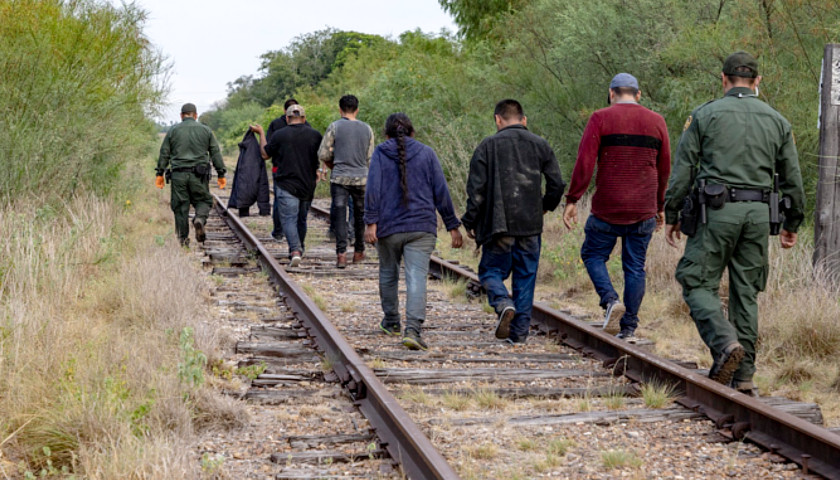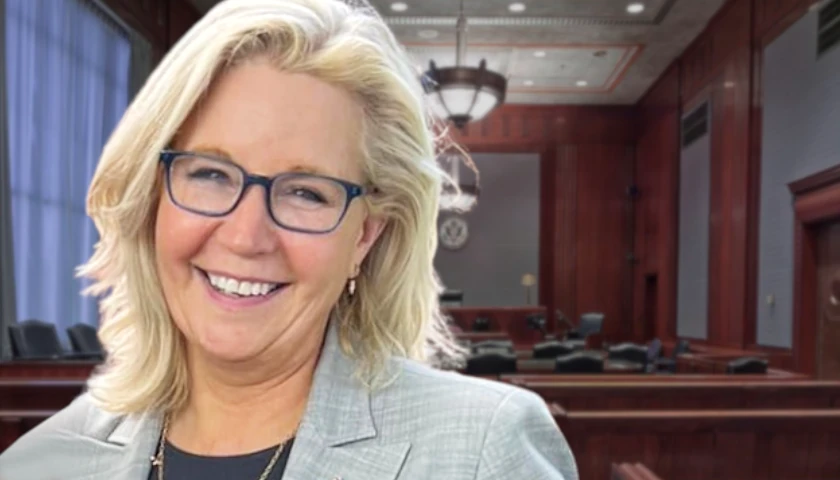by Rachel Bovard
As Congress persists in serially ignoring anything having to do with the border crisis, the Trump Administration continues to release regulations aimed at fixing the problem of illegal immigration.
The administration on Friday released its latest rule to address a longstanding “pull” factor: that illegal migrants who arrive with children immediately are released into the interior of the country.
This process, often called “catch and release,” has bedeviled multiple administrations for years. It has its roots in a 1997 legal agreement known as the Flores settlement. Though originally having to do with detention conditions, judges have expanded and interpreted the settlement to mean that children cannot be detained for more than 20 days.
The practical effect leaves the government with two choices: separate families when they get here, detaining the parents and placing their children with foster families, or release families to await processing together.
The latter has been the approach of most presidents. The Trump Administration, however, enacted a strict application of the law in 2018 when it began separating families to detain the adults and then reversed itself after public outcry.
The consequences of a “catch and release” policy are self-evident. U.S. Border Patrol wastes time and resources arresting crossers who are then immediately released. Illegal crossers are incentivized to cross, knowing they’ll be released instead of being detained. Many of them do not show up for their designated court dates, remaining in the country illegally and without documentation, creating a permanent underclass.
Mark Morgan, the acting head of U.S. Customs and Border Protection, put it bluntly. “The smugglers know and those trying to illegally in the country know, you grab a kid, that’s your U.S. passport into the United States because we can’t hold you more than 20 days,” he said last week.
“That’s not long enough to go through the immigration proceedings. That’s catch and release.”
“Catch and Release” Encourages Child Trafficking
The knowledge that coming with a child can facilitate expedited entry into the United States has a darker side: a substantial growth in child trafficking. As the knowledge that children are, essentially, passports to the United States has spread, so too has the market for children to enter with.
 Illegal immigrants have incentive to drag young children on dangerous journeys where they might not otherwise have considered bringing them. And smugglers pay top dollar for children to facilitate entry.
Illegal immigrants have incentive to drag young children on dangerous journeys where they might not otherwise have considered bringing them. And smugglers pay top dollar for children to facilitate entry.
In Tijuana, groups of men were exposed attempting to purchase or steal children to accompany them to the United States. The going rate for a child reportedly is $350.
In April, Border Patrol officials identified more than 3,000 “fake families” – adults falsely claiming to be parents of children who aren’t theirs, or migrants over the age of 18 posing as children. A recent government pilot program found that 30 percent of suspected fraudulent migrant families were unrelated.
And, along with trade in children is the culture of abuse. Sexual violence against women and girls coming from Mexico and Central America is well documented.
No “Indefinite Detention”
Both of these features – the “pull” factor of immediate release that puts children at risk, and the exploitation and violence that results—are the focus of the Trump Administration’s changes to the Flores settlement.
The new rule removes the 20-day limit on detaining children, thereby allowing the Trump administration to hold families together until their asylum claims can be processed. It is similar logic to what the Obama Administration used in its 2014 “no-release” policy, wherein they detained women and children instead of releasing them in an effort to reduce the incentives contributing to a mass migration surge.
As Morgan pointed out, however, the situation facing the Trump Administration dwarfs the one President Obama declared a “humanitarian crisis” in 2014. Over the first 10 months of the 2019 fiscal year, more than 470,000 family members were detained – more than triple that of any other previous year in history.
While the rule has been described in countless headlines as allowing “indefinite detention,” the administration has clarified the time frame it expects to detain families. The Border Patrol’s Morgan estimates families would be held “from 20 to about 50 to 60 days, in general . . . It’s not indefinite. It’s just long enough to go through the immigration process.”
The administration also argues that this rule would result in migrants being detained in better living conditions. Right now, migrants are held in temporary detention facilities on the border, designed for quick processing. The extreme number of immigrants has slowed processing, leading to migrants being held in sub-par conditions.
The administration intends to hold families in facilities which acting Homeland Security Secretary Kevin McAleenan described as “campus-like settings with appropriate medical, educational, recreational, dining, and private housing facilities. For example, the first family residential center in Berks, Pennsylvania, has suites where each family is housed separately.” Families will also be detained in facilities in Texas designed by the Obama Administration in 2012 and 2014.
As with nearly all of our nation’s immigration policies, the Trump Administration has been left holding the bag as family migration surges to new highs. As Democrats and Republicans in Congress have failed even to acknowledge the problem, the Trump Administration is taking necessary steps to solve a crisis that affects not only American citizens, but also the thousands of migrants and migrant children put at risk.
– – –
Rachel Bovard is senior director of policy at the Conservative Partnership Institute.





